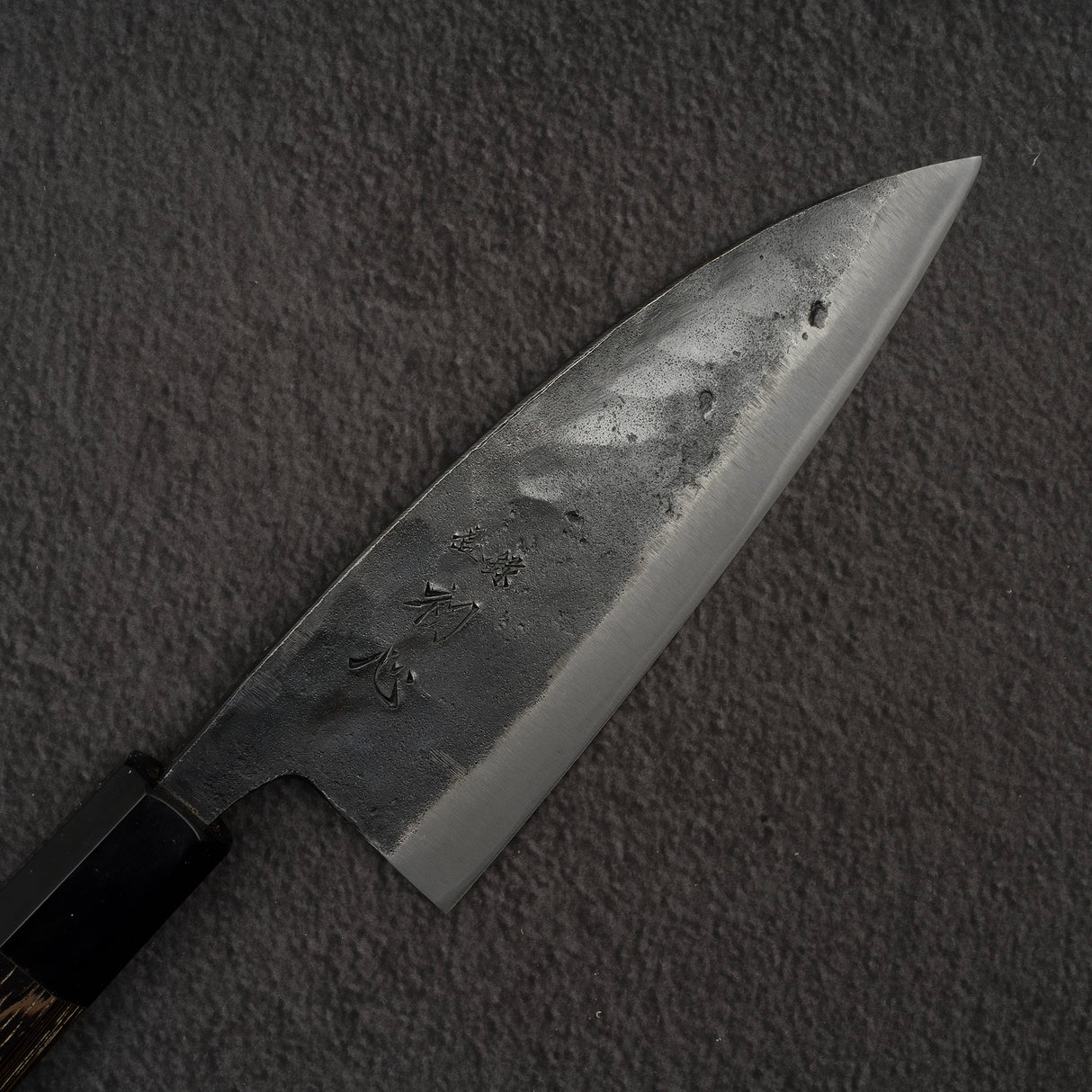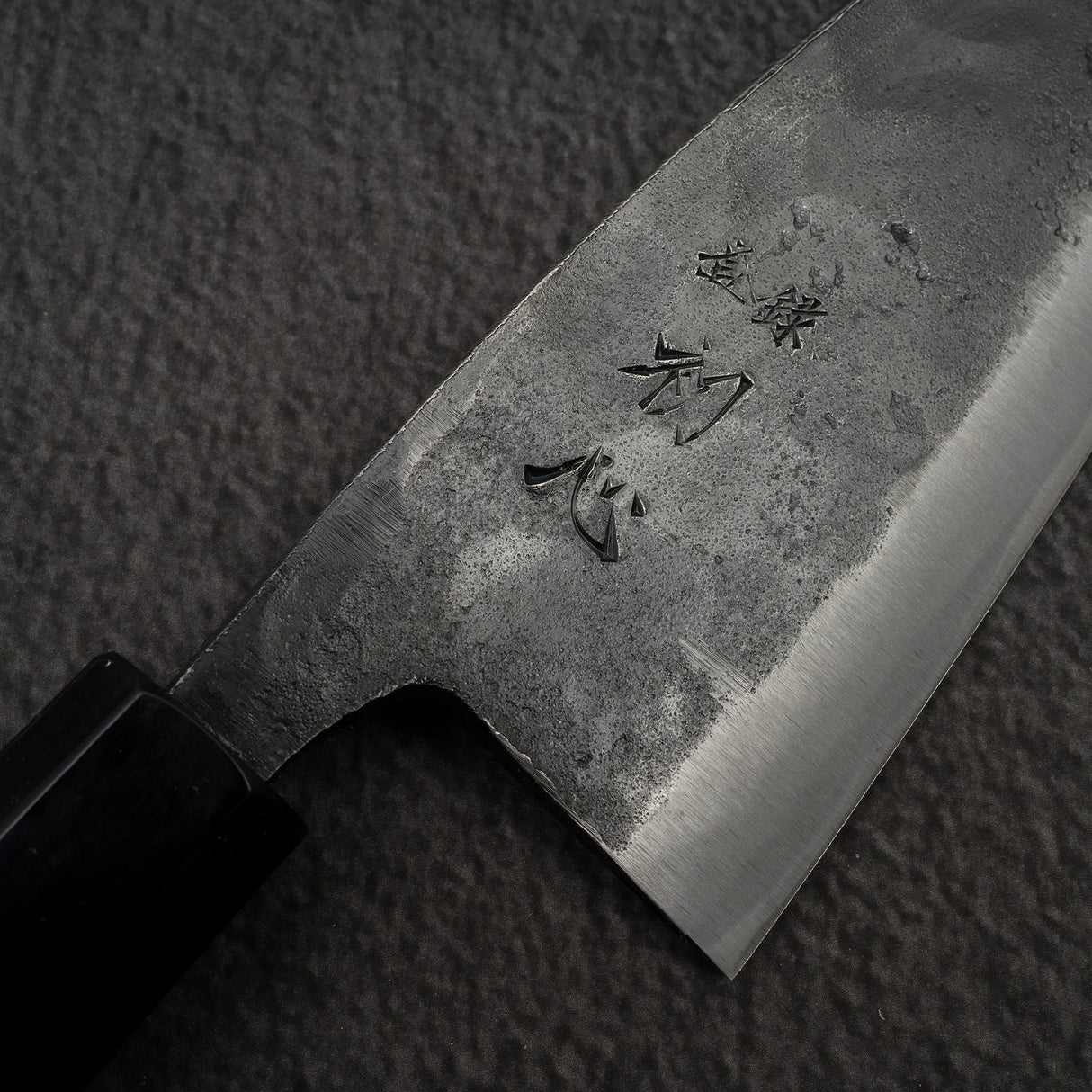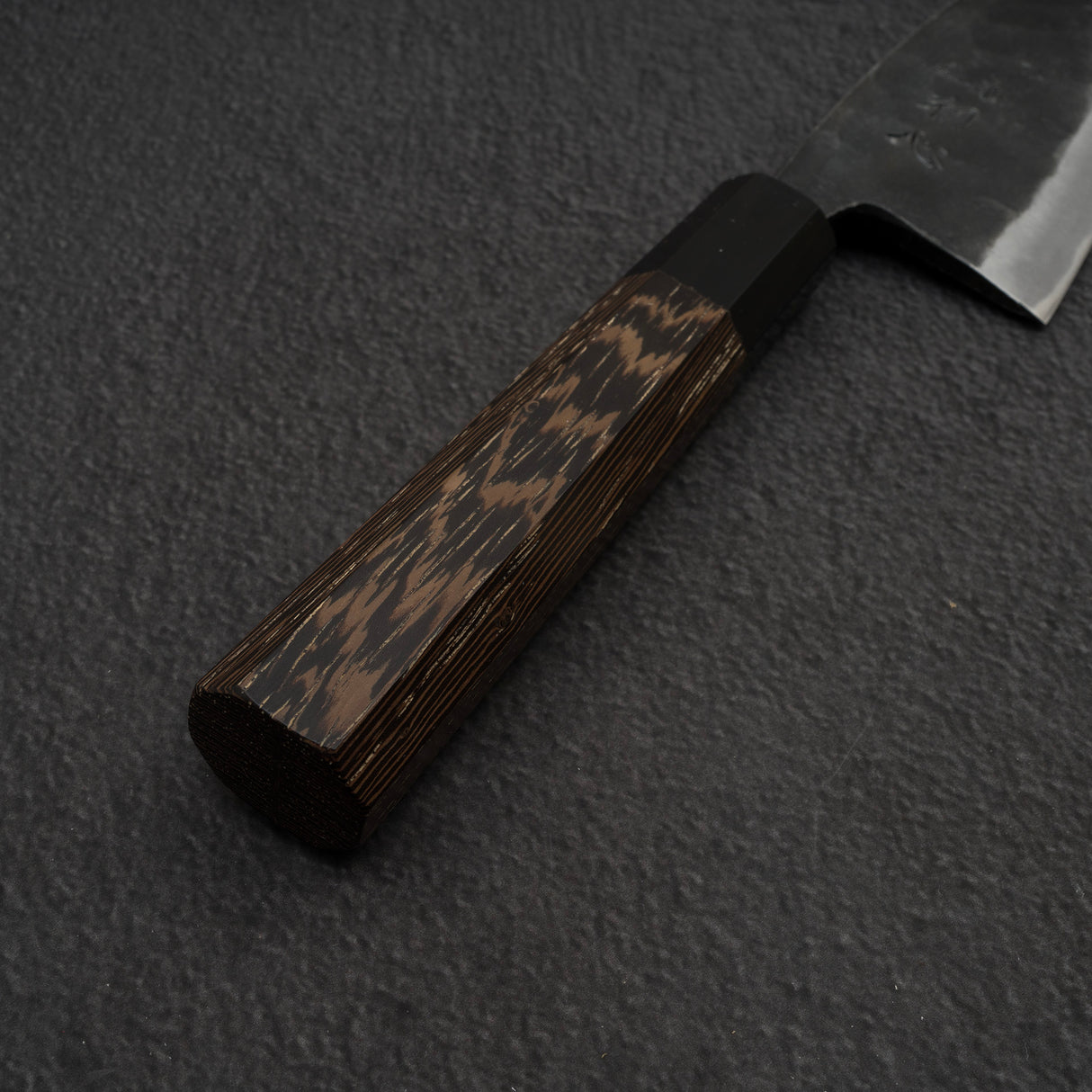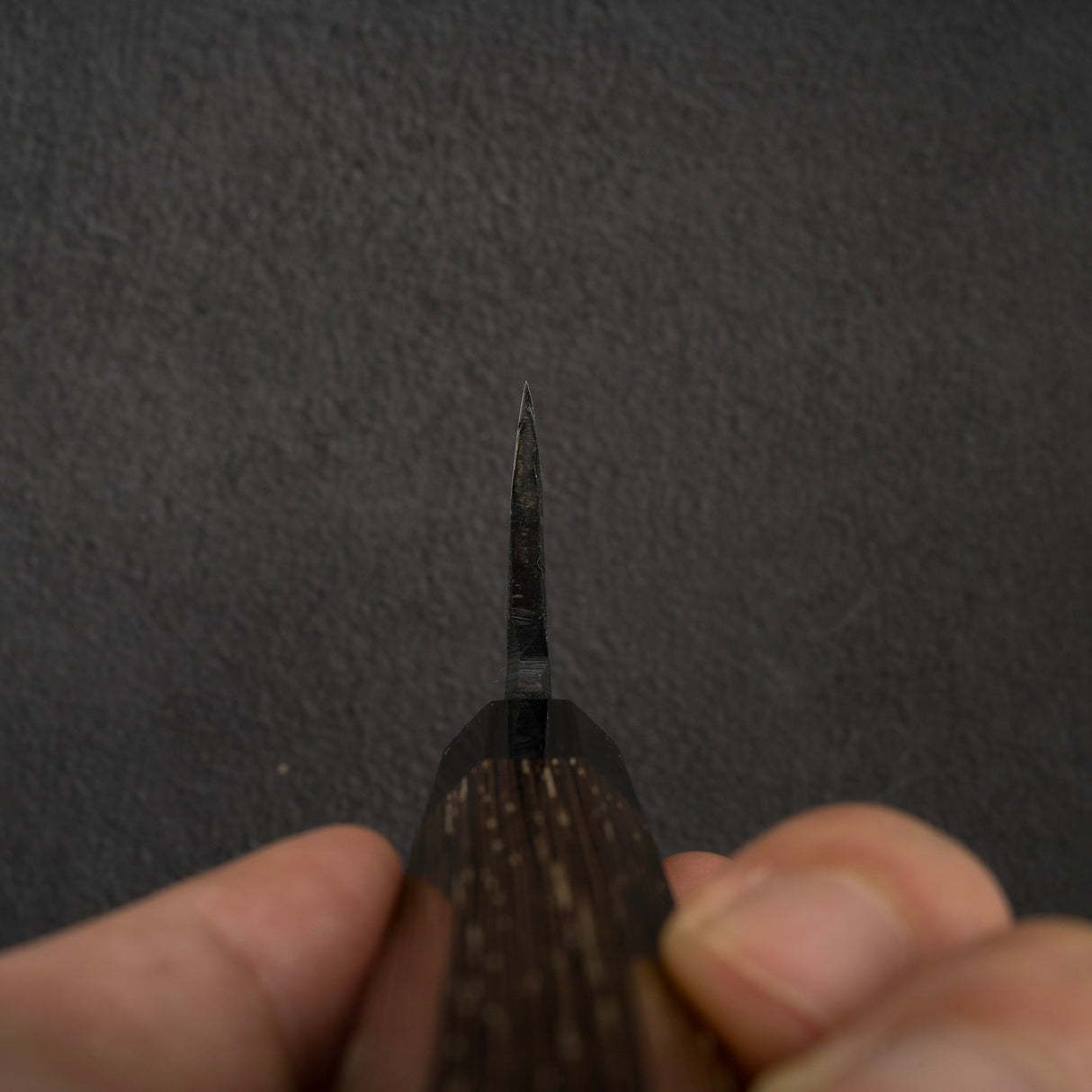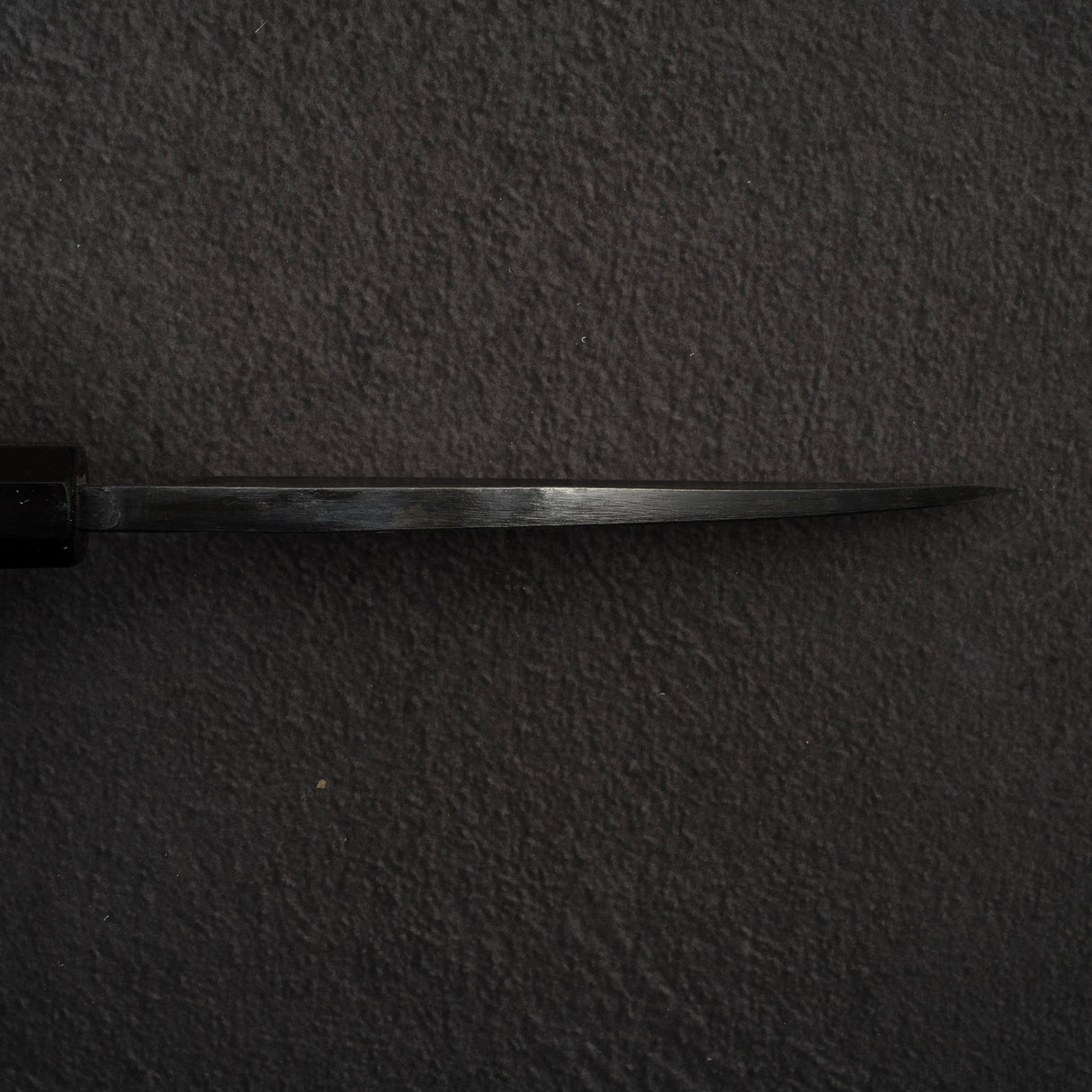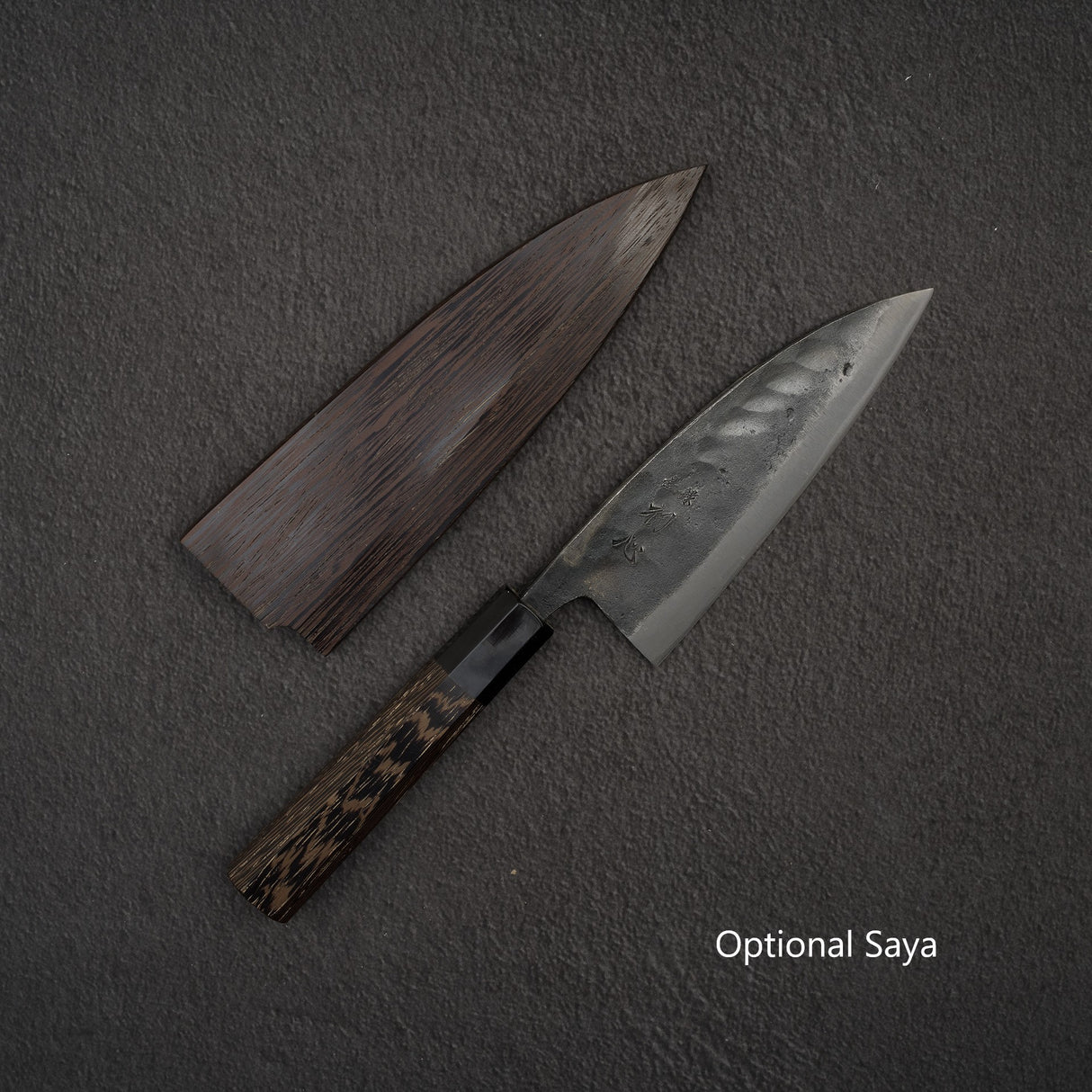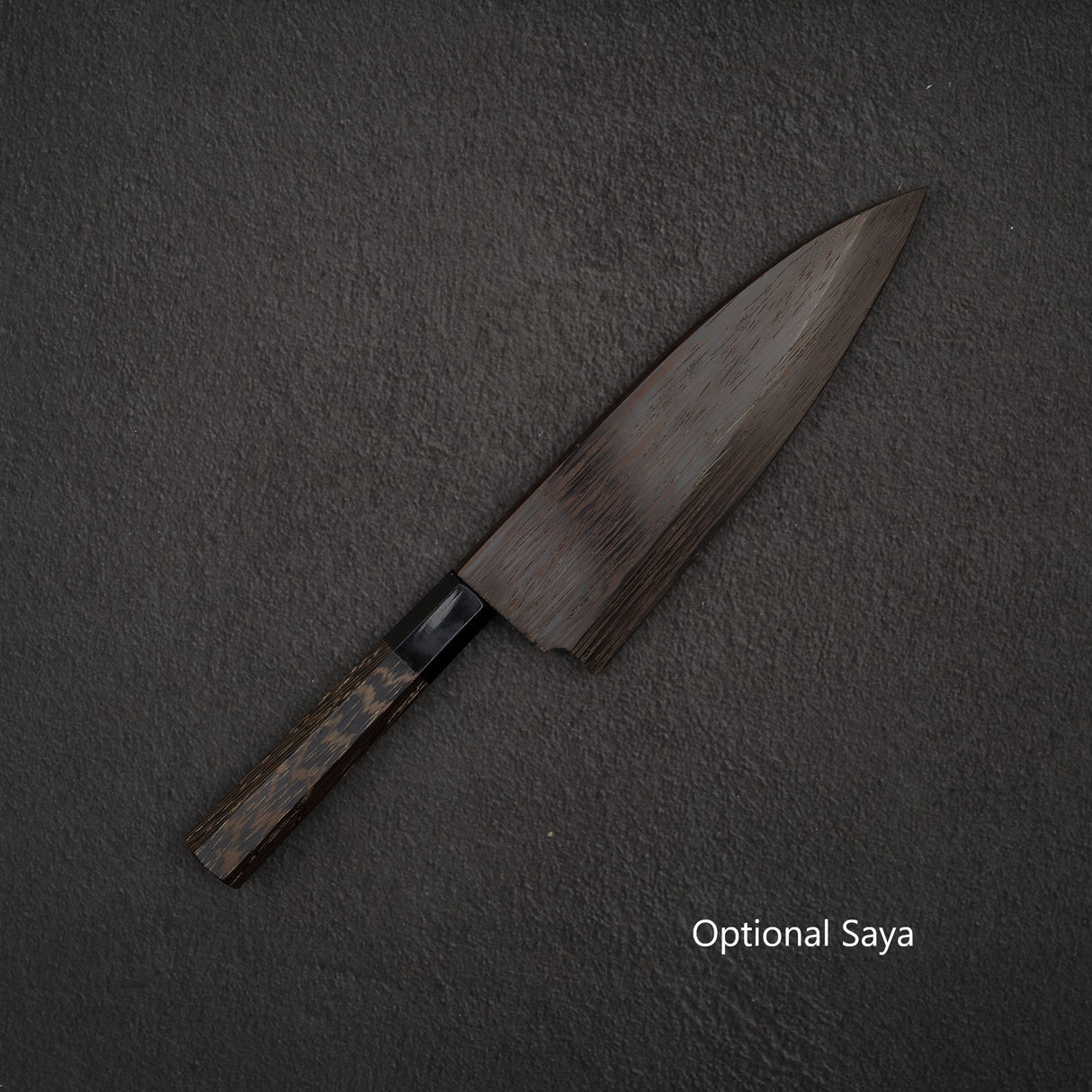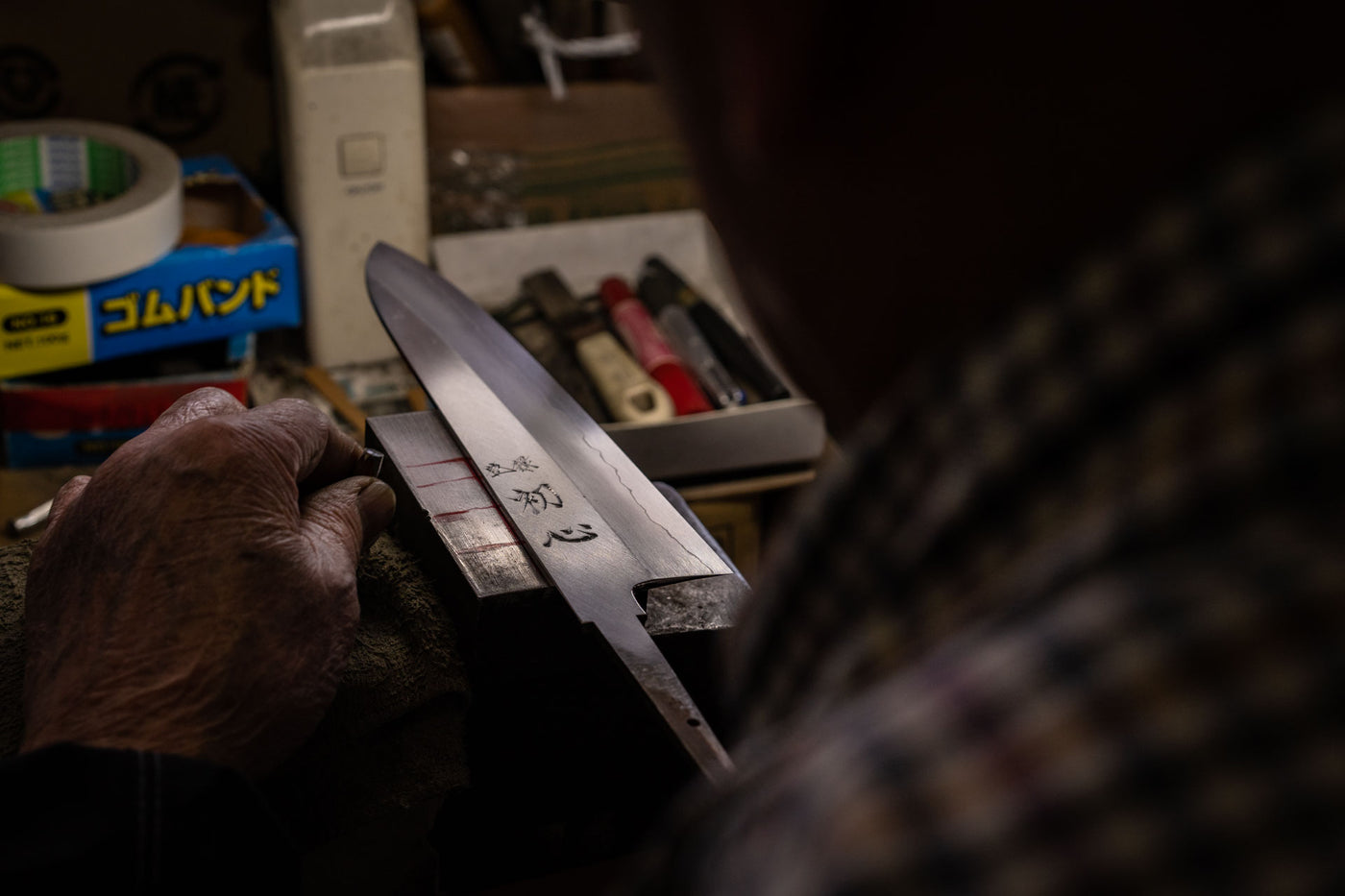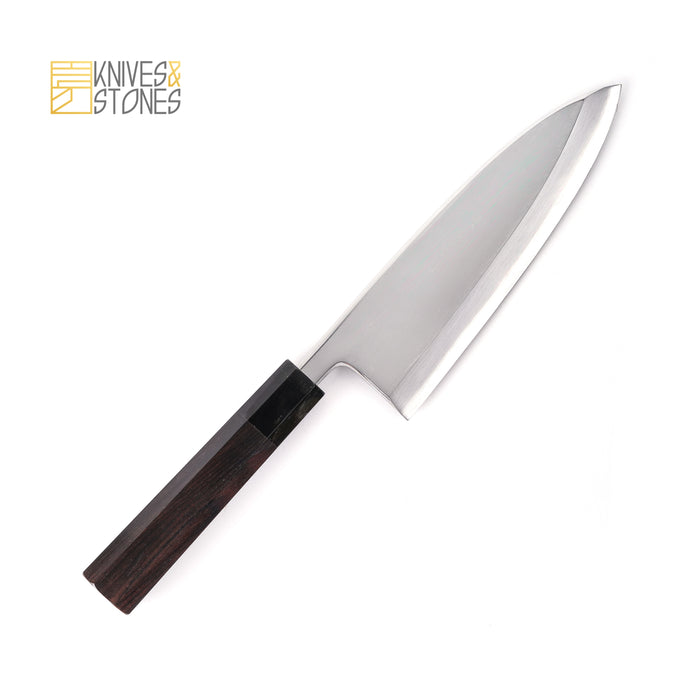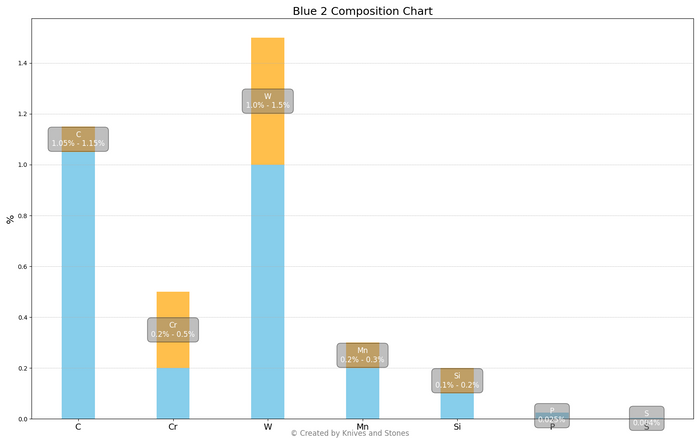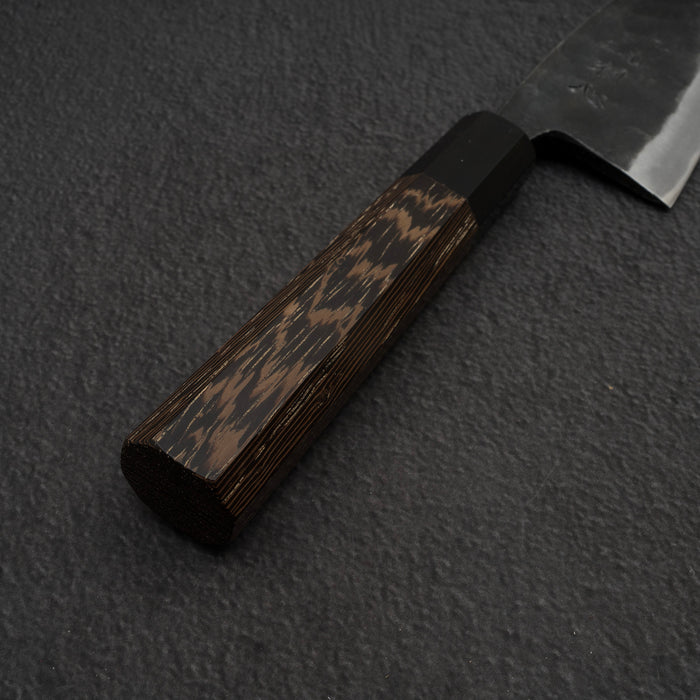Hatsukokoro | 庫存單位:
HATS_KRKZ_W2_DE150
Hatsukokoro 黑風 Blue 2 Kurouchi Deba 150mm 雙斜角
正常價格
$3,656.00
單價
/
不可用
Hatsukokoro 黑風 Blue 2 Kurouchi Deba 150mm 雙斜角 已缺貨,一旦有貨就會出貨。
無法載入取貨日期
Detailed Specifications
| Line | 初心黑風白二黑打 |
| Profile | 出刃 |
| Bevel Type | 雙斜面 |
| Weight | 269 g | 9.5 oz |
| Edge Length | 156 mm | 6 9/64″ |
| Heel Height | 52 mm | 2 3/64″ |
| Width @ Spine | 7.4 mm | 19/64″ |
| Width @ Mid | 6.3 mm | 1/4″ |
| Width @ 1cm from Tip | 2.8 mm | 7/64″ |
| Steel | 青二 / 青紙二號 | 碳鋼 |
| Blade Construction | 三枚 - 不鏽鋼夾層 |
| Hardness (HRC) | 61 - 63 |
| Surface Finish | 黑打 |
| Handle | 八角紫檀柄 黑色口輪 |
| Region | 兵庫 |
| Best for |
|

| Pros | Cons |
|
|
|
Care Instruction
- Don't cut hard things! Japanese knives are brittle so bone hacking is a NO NO!
- Wash with neutral detergent after use, and wipe dry;
- Please don't wash knife with dishwasher, it will damage the wood handle;
- Be careful not to leave the knife close to a heat source for a long time;
- It is a lot more dangerous to cut with a blunt knife than a sharp knife!
- It is best to sharpen a Japanese knife regularly on a waterstone. Error: Steel nature unknown



